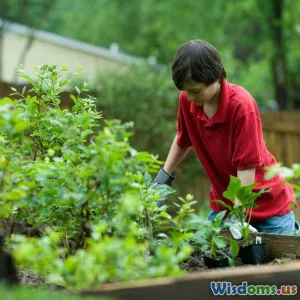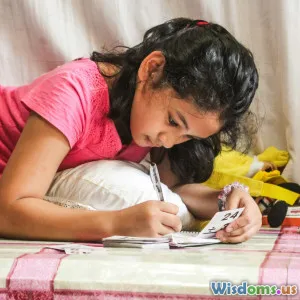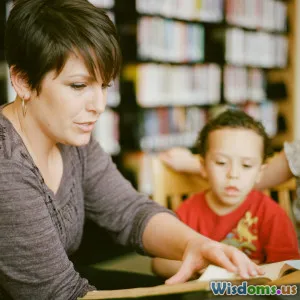
Discipline Without Punishment Lessons from Indigenous Family Life
9 min read Explore how Indigenous family practices model discipline without punishment through respectful communication, community values, and natural consequences. (0 Reviews)
Discipline Without Punishment: Lessons from Indigenous Family Life
Introduction
In many societies today, parental discipline often revolves around punishment—time-outs, grounding, or verbal reprimands—aimed at correcting behavior through consequences. But what if there were alternative ways, centered on empathy, connection, and natural learning? Indigenous family life across the globe offers an inspiring blueprint: discipline without punishment, grounded in respect, community engagement, and nurturing a child’s internal compass. This article explores these rich traditions and distills lessons modern families can adopt to foster discipline that cultivates responsibility and self-regulation naturally and compassionately.
Understanding Discipline Without Punishment
Discipline and punishment are frequently conflated, but they represent very different approaches.
- Punishment typically inflicts a penalty to deter undesired behavior, often relying on fear or authority.
- Discipline, in its truest sense, is about teaching self-control, accountability, and moral understanding.
Indigenous cultures often practice discipline as a teaching moment, prioritizing the child's holistic well-being and social responsibilities rather than exerting control through negative consequences.
Core Principles in Indigenous Family Life
1. Communal Responsibility and Social Learning
Unlike the Western nuclear family paradigm, many Indigenous communities operate within extended family and clan structures where child-rearing is a collective responsibility. For example, the Ojibwe and the Māori emphasize that "it takes a village to raise a child." When a child misbehaves, it is seen not merely as an individual's issue but a signal to the community that supports the child may need to step in gently to guide.
This system minimizes isolation and concentrates on reinforcing cultural values through storytelling, shared activities, and oral traditions. Children learn by observing and taking part in community roles from a very early age and internalize social codes without the need for punitive measures.
2. Natural and Logical Consequences
Many Indigenous families employ consequences driven by natural outcomes that make sense to the child, fostering intrinsic motivation rather than fear of punishment.
For example, the Australian Aboriginal peoples may allow a child who disrespects sacred sites the opportunity to participate in restorative ceremonies that emphasize accountability and respect rather than punish. The process is educational — raising awareness of cultural importance and restoring harmony.
Similarly, in Native Hawaiian communities, if a child neglects communal tasks, the consequence may be temporary withdrawal of group privileges or the need to contribute more profoundly in a cooperative task — decisions made collectively with respect for the individual’s dignity.
3. The Role of Storytelling and Oral Tradition
Stories are powerful tools for imparting moral lessons.
Indigenous educators often use fables featuring animals, ancestors, or supernatural beings to illustrate the value of honesty, patience, cooperation, and respect. For instance, Native American lore often involves the Trickster character, who learns through consequence rather than punishment, showing that mistakes lead to natural insights. This indirect, metaphorical method encourages children to reflect and learn internal lessons rather than feeling shamed or oppressed.
4. Inherent Respect and Connected Relationships
Indigenous family structures prioritize close-knit, loving relationships where respect is mutual.
In the Navajo tradition, discipline is steeped in "Hochochii’í" (restraint and harmony). Elders guide youth with patience to help them understand the impact of their behavior on the community and self, focusing on long-term harmony instead of immediate correction.
The emphasis is on restoring relationships rather than exacting retribution. When children misstep, adults collaborate respectfully rather than impose harsh penalties, offering guidance that nurtures the child’s sense of identity and belonging.
5. Teaching Through Modeling Behavior
Children in Indigenous societies learn primarily by modeling after adults and elders.
Because elders demonstrate the values and behaviors they wish to see in youth, discipline becomes a fluid, consistent process embedded in daily life, not isolated corrective acts. This process aligns with Albert Bandura’s social learning theory, which underlines the importance of observational learning.
For example, in the Inuit communities of Arctic Canada, elders teach environmental stewardship by actively involving young ones in traditional hunting and conservation practices, naturally reinforcing respect and responsibility without punitive measures.
Real-World Applications and Insights
Case Study: The San People of Southern Africa
The San tribe employs a non-punitive approach rooted in patience and gentle guidance. A San parent said, "We do not punish because the child is like a seed; harshness kills the potential." They encourage children to discover consequences firsthand, offer explanations, and use storytelling to correct without shame. This approach fosters trust and lifelong learning.
Insights from Research
Studies validating Indigenous discipline models highlight improved emotional intelligence among children and stronger community bonds. A 2017 study by the University of British Columbia examined Indigenous parenting practices and found that non-punitive approaches were correlated with higher resilience, empathy, and social competence in children compared to punitive methods.
Furthermore, such approaches reduce anxiety and aggression often associated with punitive discipline—highlighting how Indigenous knowledge is not only culturally valuable but pedagogically effective.
Lessons for Modern Parenting
Even families outside Indigenous cultures can benefit greatly by integrating these principles:
Prioritize Connection over Correction
Building warm, trusting relationships creates a foundation where children want to behave responsibly—not out of fear but respect.
Employ Natural Consequences
Allow lingering effects of choices to teach lessons—like a child losing the chance to play with a broken toy due to improper care—avoiding imposed punishment.
Use Storytelling as a Moral Compass
Use age-appropriate stories or personal anecdotes that illustrate values and guide decision-making.
Teach by Example
Demonstrate empathy, patience, and community responsibility through actions parents want children to emulate.
Foster Community Engagement
Encourage children to participate in household or community tasks that build responsibility, making discipline part of shared growth.
Conclusion
Indigenous family life teaches us that discipline transcends punishment. It is a holistic, nurturing process focused on teaching, relationship-building, and fostering intrinsic motivation. In embracing connection, community responsibility, natural consequences, and storytelling, families across cultures can raise morally conscious, self-disciplined individuals without resorting to punitive measures.
As a global society increasingly recognizes the harm caused by harsh disciplinary practices, Indigenous wisdom offers a profound, actionable path forward—one seeded in respect, patience, and deep humanity. By learning from these time-honored approaches, modern families can nurture children not just to comply but to understand, choose, and grow positively.
References:
- Kandina, A. (2017). Indigenous Parenting and Resilience. University of British Columbia Press.
- Smith, L. (2015). "Respecting Children’s Autonomy: Lessons from Māori Discipline Practices." Journal of Indigenous Studies, 39(2), 120–135.
- Turner, N. (2019). The Earth’s Teachings: Indigenous Perspectives on Environmental Stewardship. Nature Press.
- Wilson, S. (2008). Research is Ceremony: Indigenous Research Methods. Fernwood Publishing.
Rate the Post
User Reviews
Other posts in Cultural Studies
Popular Posts















